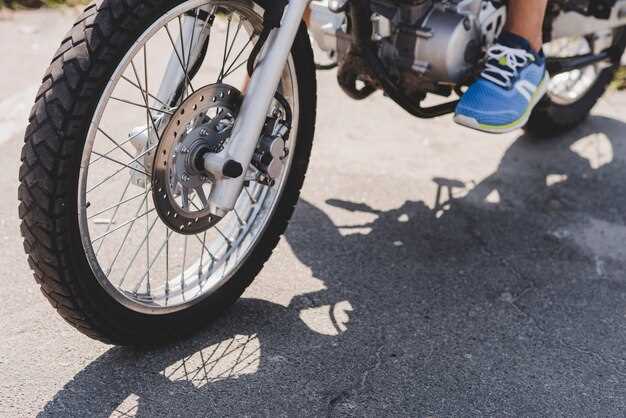

Motorcycle tires are crucial for safety, performance, and overall riding experience. Over time, tires wear down due to road conditions, weather, and riding habits. Recognizing when it’s time for a replacement can prevent accidents and enhance your bike’s handling. Ignoring tire issues can lead to dangerous situations, making it essential for riders to stay informed.
Identifying key indicators that signal the need for tire replacement is vital. Tread depth, visible cracks, and uneven wear patterns are common signs that your tires may no longer provide the grip and stability necessary for safe riding. Performing regular inspections can help you catch these issues early, ensuring that you’re not caught off guard during your rides.
In addition to physical damage, consider your riding style and typical usage. Frequent long-distance trips or aggressive cornering can accelerate tire wear. Being proactive about your motorcycle tires will not only enhance your riding experience but also contribute to your safety. If you’re unsure about the condition of your tires, it’s always best to consult a professional.
Identifying Uneven Tire Wear Patterns

Uneven tire wear is a critical sign that your motorcycle needs replacement tires. By regularly inspecting your tires, you can spot specific wear patterns that indicate potential issues. Common types of uneven wear include cupping, scalloping, and uneven tread depth.
Cupping occurs when the tire develops low and high spots around its circumference, often resulting from improper balance or misalignment. This pattern can create a noticeable vibration while riding, impacting both comfort and safety. If you notice this wear, it is essential to address the underlying issues before considering a replacement.
Scalloping, on the other hand, presents as a series of waves or dips in the tread surface. This pattern is often caused by improper inflation or poor suspension settings. It can lead to decreased traction and increased stopping distances, making timely replacement crucial for your safety.
Another indicator of uneven wear is noticeable differences in tread depth across the tire. If one side of the tire appears more worn than the other, it can signal misalignment or other mechanical issues. Such asymmetry in wear can severely affect handling and stability, necessitating a tire replacement.
In summary, identifying uneven tire wear patterns is vital for maintaining your motorcycle’s performance and safety. Timely replacement not only enhances your riding experience but also prevents potential accidents caused by compromised tire integrity.
Understanding Tread Depth and Safety Limits

Tread depth plays a critical role in the performance and safety of motorcycle tires. As tires wear down, their ability to grip the road diminishes, increasing the risk of accidents. It’s essential to monitor the tread depth to determine when replacement is necessary.
The legal minimum tread depth in many regions is 1.6 mm. However, for optimal safety, it is advisable to replace tires before they reach this limit. A tread depth of 3 mm or more is generally recommended for safe riding in wet conditions, as deeper grooves help channel water away from the tire’s surface, reducing the likelihood of hydroplaning.
Wear indicators are often molded into the tire tread. These indicators become level with the tread when the wear reaches a point where replacement is needed. Regularly checking these indicators can help maintain safety and performance.
It’s important to note that uneven wear can also signal issues with alignment or suspension, necessitating not only tire replacement but also a thorough inspection of the motorcycle’s overall condition. Maintaining adequate tread depth is vital for ensuring proper handling and braking, especially in adverse weather.
Recognizing Performance Changes During Rides
Monitoring your motorcycle’s performance can provide crucial insights into the condition of your tires. Any noticeable changes in handling or traction may indicate that a replacement is necessary due to wear.
Here are key performance changes to look out for:
- Reduced Traction: If you experience slipping during turns or on wet surfaces, this could signify that the tread has worn down and is no longer effective.
- Increased Stopping Distance: Longer braking distances can indicate that tire grip has diminished due to wear, affecting overall safety.
- Vibration: Excessive vibrations while riding can point to uneven wear or structural damage, suggesting an urgent need for replacement.
- Handling Issues: If your bike feels unstable or if it pulls to one side, this may stem from uneven tire wear, requiring immediate attention.
Keep an eye on these symptoms during your rides. Regularly assessing your motorcycle’s performance can help you identify when it’s time for a replacement to maintain safety and enhance riding enjoyment.
